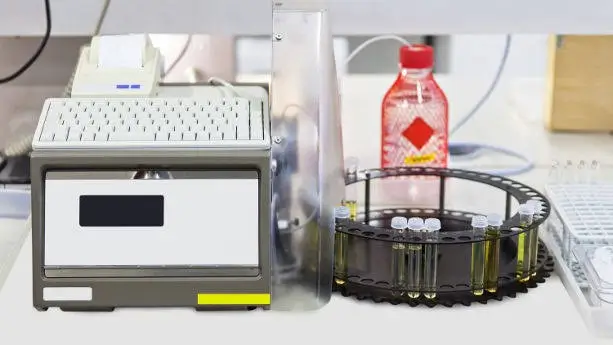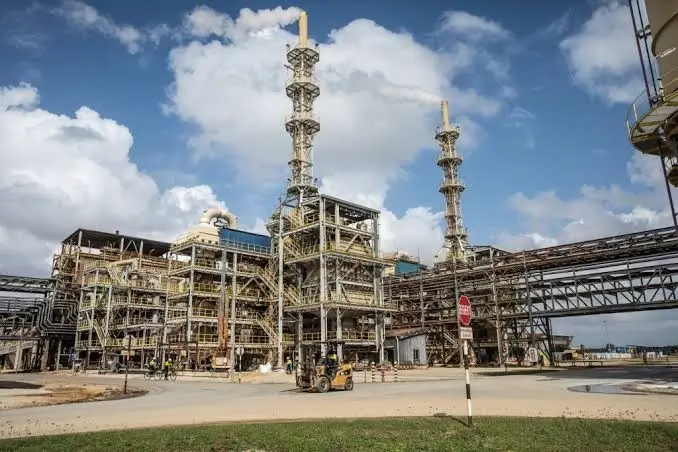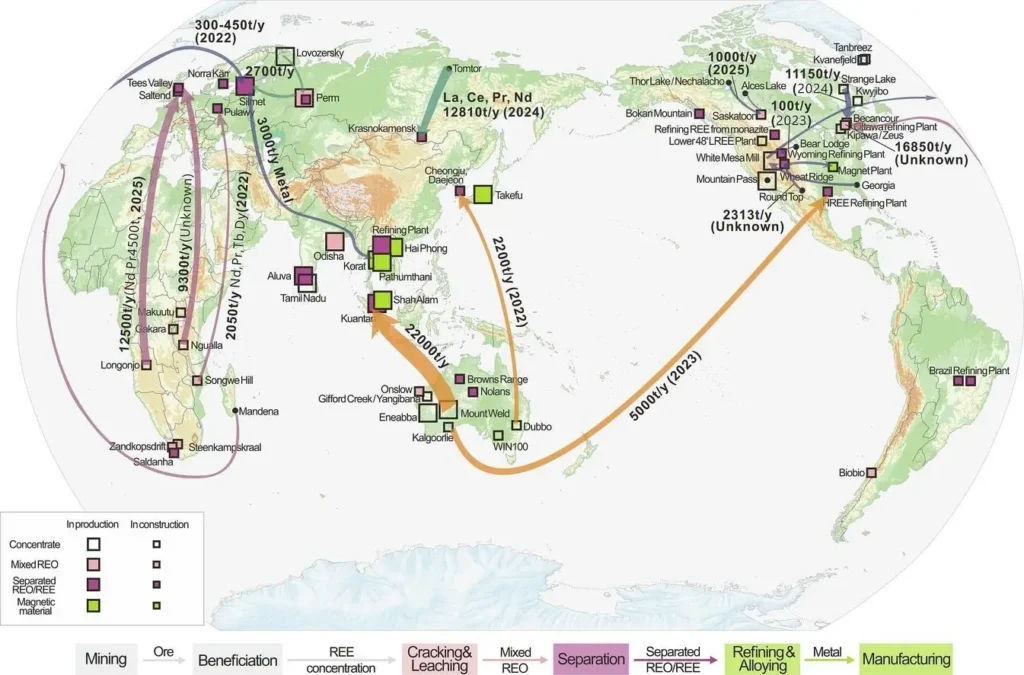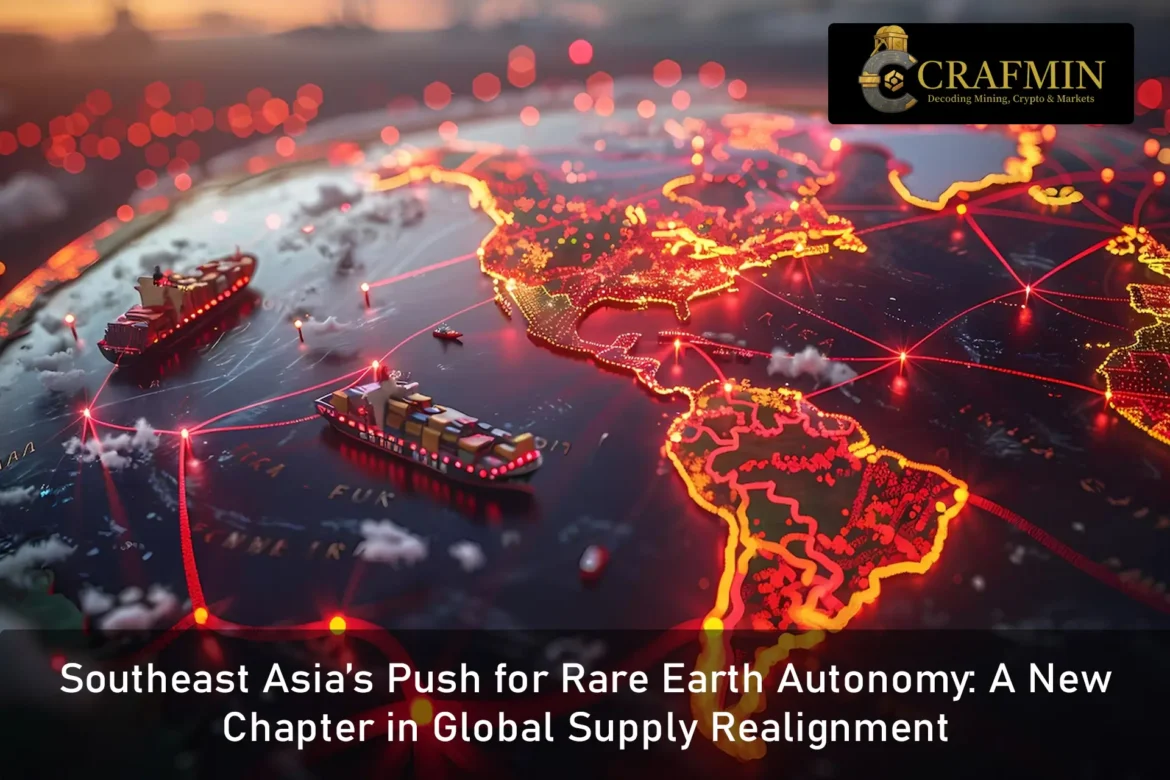Introduction: The Critical Shift No One’s Watching
China’s overwhelming control of the rare earth supply chain has long shaped the global market, prompting other regions to reassess their reliance and push for diversified sourcing strategies.But beneath this monopoly lies a quiet revolution: Southeast Asia is stepping up.
While the world is busy chasing battery metals and net-zero targets, Vietnam, Indonesia, and Malaysia are recalibrating their mining strategies, refining agreements, and strengthening ties with tech-driven exploration firms. Could this triad be the next REE powerhouse?
Southeast Asia’s Strategic Positioning
Vietnam: Science-Driven Strategy Backed by CSTME
Vietnam’s Science and Technology Centre for Mineral Exploitation (CSTME) recently made headlines by conducting pilot-scale processing tests on Critica’s Jupiter rare earth sample. Through these experimental evaluations, Vietnam is not only testing the efficiency of its rare earth processing methods but also subtly positioning itself as a potential leader in Southeast Asia’s refining landscape.

Image 1: CSTME mineral test lab (source: Compliance Gate)
With state-backed research entities actively engaging with foreign players, Vietnam is quickly moving beyond being a raw material supplier to a technology-oriented REE nation.
Indonesia: Nickel-Rich, But Eyeing Rare Earths
Indonesia’s track record in battery metals is formidable. Now, with unexplored REE reserves in Kalimantan and Sulawesi, it’s redirecting attention towards heavy rare earth elements — especially in monazite-rich zones. Analysts expect dual-commodity exploration to rise, with Jupiter iron byproduct trends becoming more commonplace.
While infrastructure lags behind, recent export bans and tax reforms suggest Indonesia’s government is serious about downstream integration — a page taken directly from China’s playbook.
Malaysia: Regulatory Reboot and Lynas Controversy
Malaysia is often viewed through the lens of Lynas Rare Earths, the Australian company with its processing plant in Kuantan. But beyond Lynas lies a wave of local startups partnering with ASEAN universities for eco-friendly extraction methods — especially those aimed at reducing radioactive waste.
Curtin University’s Trailblazer initiative, for instance, has inspired multiple Malaysian labs to experiment with low-impact beneficiation methods.

Image: Rare earth processing unit in Malaysia
Source:(Lynas Rare Earths)
The Tech Edge: University-Led Mining Incubators
The Curtin University Trailblazer program is setting new standards in applied mineralogy. Its collaboration with Critica (ASX: CRI) on the Jupiter REE deposit isn’t just about validation — it’s about future-proofing.
The Curtin-Critica pipeline merges bulk sampling data with AI-enhanced beneficiation techniques, offering a template other Southeast Asian institutions are beginning to emulate.
Focused Keyword: Critica Jupiter rare earth sample
Can China Be Displaced?
Short answer? Not overnight. But consider this:
- China’s environmental regulations are tightening.
- Western nations are actively subsidising non-Chinese REE sources.
- ASEAN nations are geographically blessed with diverse REE-rich mineralogy.
- The cost of shipping raw ores to China is rising, giving local beneficiation an edge.
Add those together and you have a slow but sure shift.

Image: REE global supply chain map
Source (Science Direct)
Investors Are Already Watching
Financial activity points to a shift in momentum:
- Vietnamese rare earth developers are reportedly in early talks with industrial partners in Japan and South Korea, exploring long-term supply collaborations.
- Indonesia is said to be forging early-stage agreements with South Korean battery firms, hinting at its ambition to enter the rare earth supply chain.
- Malaysia’s new tech-focused processing licenses are attracting green-tech investment firms.
These trends suggest that REE independence is not a pipe dream — it’s a slow-burn geopolitical pivot with material consequences.
Also Read: Critica Jupiter Rare Earth Sample Heads to CSTME for Breakthrough Mineral Testing
Final Thoughts: Not Just About Resources—It’s About Resilience
The REE race isn’t just about who has the minerals—it’s about who can refine, process, and commercialise them. In this high-stakes race, Southeast Asia has the geology, the urgency, and increasingly, the technology.
While China still casts a long shadow, the emergence of ASEAN as a regional REE coalition is perhaps the boldest shift yet in the global mining narrative.

